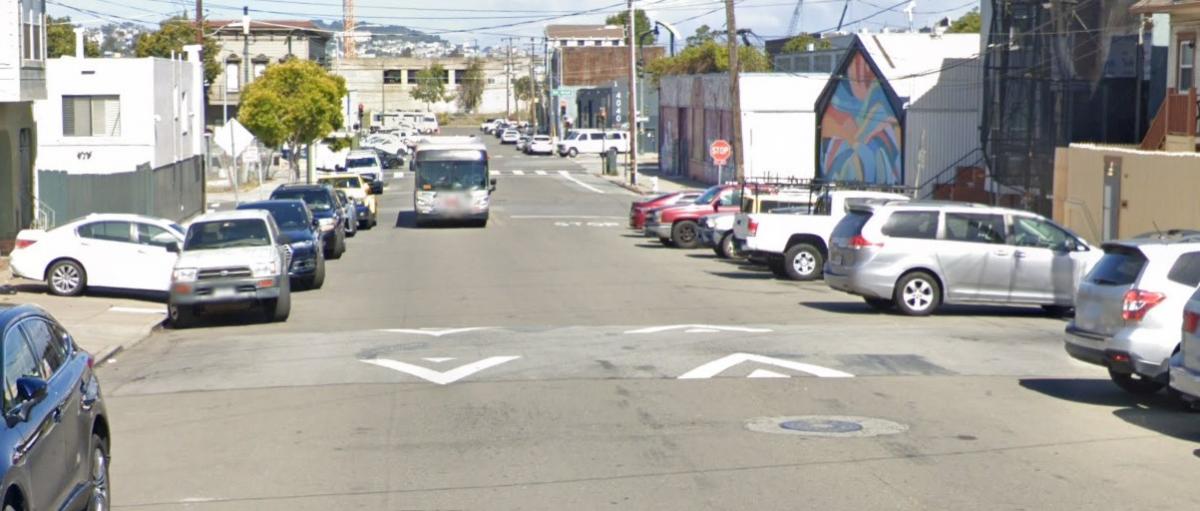The SFMTA's Traffic Calming Program is designed for and driven by the community. By working with residents like you, we install safety improvements to help slow down speeding on residential streets to make neighborhoods safer for everyone walking, biking and driving.
Program Update: Fulfilling Your Requests
Thank you for your interest in the Traffic Calming Program! Since launching the program in 2001, we've received hundreds of applications from neighborhoods across San Francisco.
We are currently focusing on delivering approved projects. Early in the pandemic, we eased the requirements for residents requesting traffic-calming improvements. This resulted in an unprecedented volume of applications. We eventually had to pause accepting applications so that we could address those that had already been approved. We also needed the San Francisco County Transportation Authority to approve funding so that we could resume this work. We are now installing traffic calming devices at 141 locations citywide - all requested by community members.
This approach allows us to catch up on requests while tackling other proactive street safety projects city-wide. When we begin to accept new applications for residential traffic calming, we will update this page.
If you have already applied: You will receive an email with information about your application status.
If you received a postcard in the mail: Your street is scheduled to have traffic-calming improvements installed by the end of the year. A neighbor of yours requested these improvements.
View our progress: You can view an interactive map of pending and completed traffic calming devices here.
What Traffic Calming Is:
Traffic calming uses physical features to help drivers slow down. These proven safety tools reduce speeding and make streets more livable.
Common traffic calming devices include:
-
Speed humps – Raised sections across the road
-
Speed cushions – Raised sections with wheel slots for emergency vehicles and buses
-
Speed tables – Flat-topped raised areas, often at crosswalks
-
Traffic circles – Circular islands at intersections
-
Median islands – Raised areas that provide safe crossing spots
The type of device we install depends on each block's specific conditions. Speed humps, speed cushions and speed tables are most common because they effectively manage vehicle speeds. See the bottom of this page for more information, illustrations and photos of these devices.
What Traffic Calming Isn't:
The Traffic Calming Program focuses on mid-block speeding on residential streets. The program does not address:
-
Speeding on busy arterial streets (these are handled through other SFMTA programs)
-
Large-scale traffic congestion
-
Multi-block infrastructure projects
-
Stop sign requests (stop signs are handled separately and can be requested through 311)
Stop signs control right-of-way at intersections but don't slow down mid-block speeds. Traffic calming devices encourage slower speeds along the entire block.
For intersection safety concerns: Contact the SFMTA through the city's 311 system or call 311 (outside SF: 415-701-2311).
How the Program Works:
When we are accepting applications, here's how the process works:
1. Application
Residents concerned about speeding on their block can submit an application.
2. Evaluation
We collect speed data and evaluate applications based on:
-
Whether the street qualifies (residential streets with fewer than 7,500 vehicles per day)
-
Whether speeding is happening (usually 85% of drivers going 5+ mph over the speed limit)
-
Other factors like proximity to schools, parks, transit and bike routes
3. Notification
Our goal is to inform applicants within six months of the application deadline if their block was accepted.
4. Design
Our engineers develop the appropriate traffic calming solution for each approved location. Speed humps, cushions and tables are most common because they're effective and relatively cost-efficient.
5. Public Hearing
We hold a public hearing where residents can comment on the proposal. The City Traffic Engineer makes the final decision.
6. Construction
Most installations happen within 18 months of the public hearing. Timing depends on weather, contractor availability, and the number of projects in progress.
Frequently Asked Questions
Why are applications required?
Applications help us identify where speeding is a concern and ensure community support exists before we commit resources. Demand for traffic calming is very high, and applications help us prioritize where safety improvements are needed most.
How are streets selected?
Streets must meet three criteria:
-
Eligible residential street – Local residential streets with two lanes and fewer than 7,500 vehicles per day
-
Confirmed speeding problem – Data shows 85% or more of drivers exceed the speed limit by 5+ mph
-
Priority ranking – Eligible applications are evaluated based on factors like collision history, proximity to schools and parks, transit access and bike routes
How do I know if my street qualifies?
Your street is less likely to qualify if it:
-
Is classified as an "arterial" or "collector" street in the San Francisco General Plan
-
Is frequently used by fire trucks or has a fire station
-
Is on a bus route
-
Has more than two travel lanes
Your block may be more likely to qualify if it:
-
Is in a school zone or near commercial activity
-
Has a community center, senior center, park or playground
-
Is on the bicycle network
What if I want something other than a speed hump?
Speed humps are the most effective at reducing speeds and are simpler to install than other measures. We first evaluate blocks for speed humps and only consider alternatives if speed humps won't work for that location.
Why does the program work block-by-block?
We used to plan traffic calming for entire neighborhoods at once. However, this process was time-consuming and unpredictable. Large projects often weren't completed, and community priorities changed over long timelines.
The block-by-block approach is more responsive. It puts resources where data confirms speeding problems exist and where residents support solutions.
TYPES OF TRAFFIC CALMING DEVICES:
SPEED HUMPS - A raised section across the entire road. Very effective at slowing traffic, but requires approval from the San Francisco Fire Department since they can impact emergency response times.
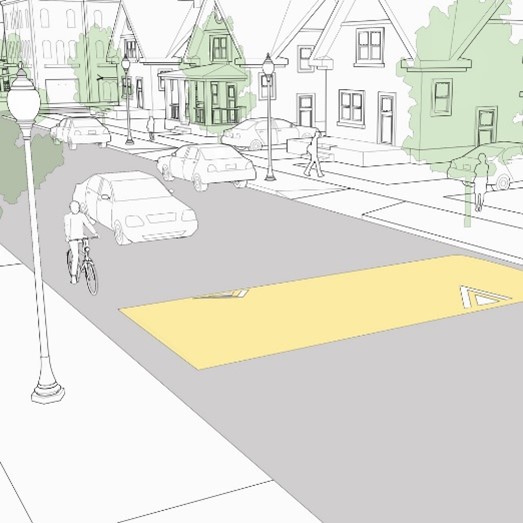
Speed Hump | National Association of City Transportation Officials nacto.org
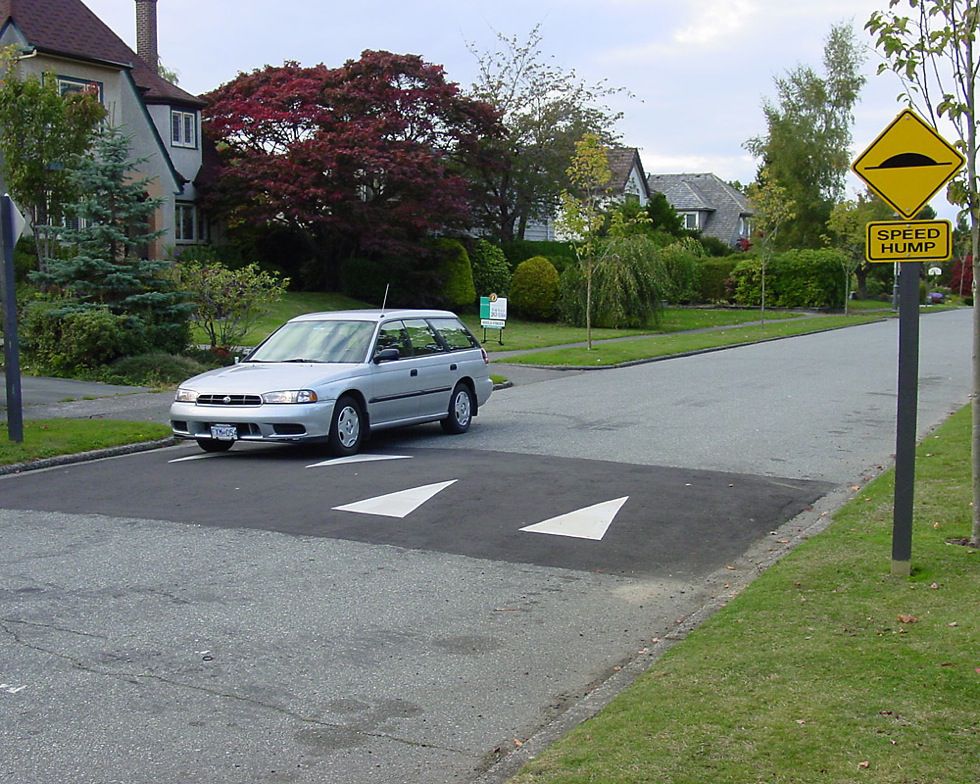
SPEED CUSHIONS - Raised sections with wheel slots that allow fire engines and buses to pass more easily while still slowing down regular vehicles.
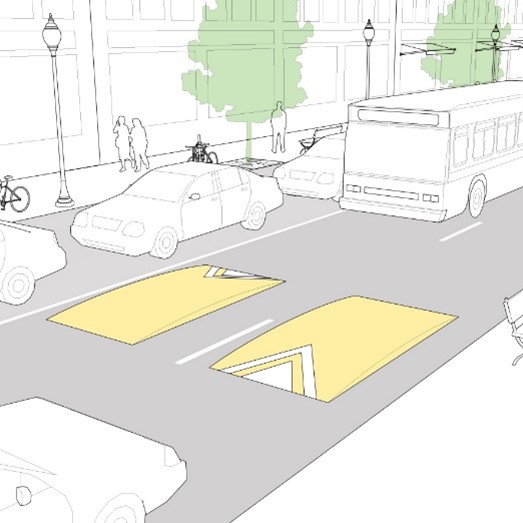
Speed Cushion | National Association of City Transportation Officials nacto.org
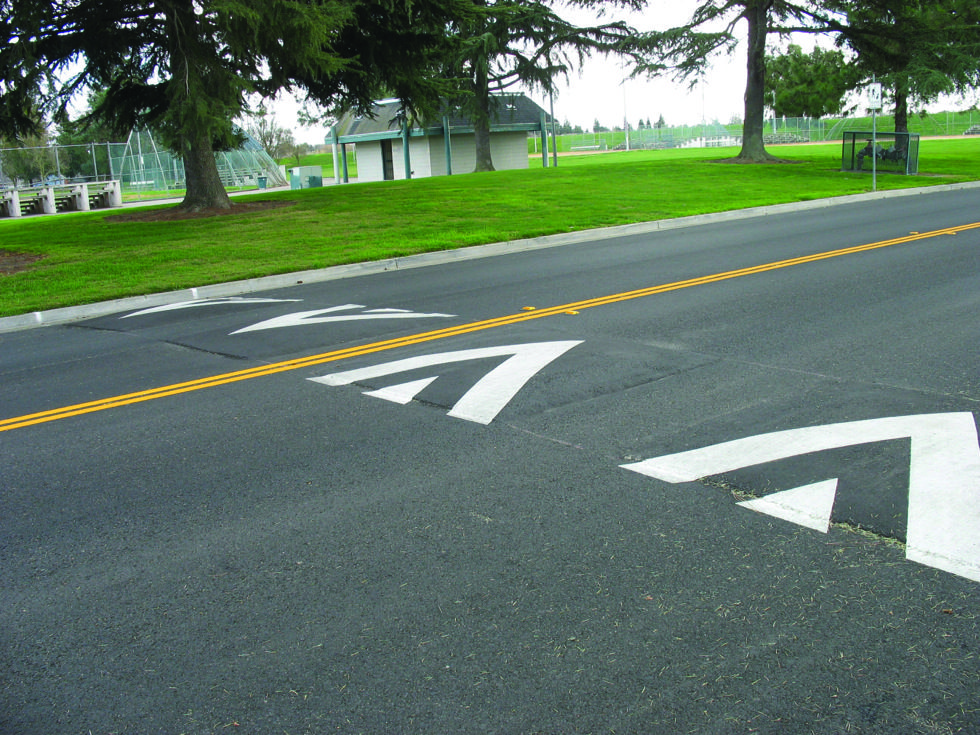
SPEED TABLES & RAISED CROSSWALKS - Flat-topped raised areas that slow vehicles mid-block or at crosswalks. Like speed humps, these require fire department approval.

Speed Table | National Association of City Transportation Officials nacto.org
